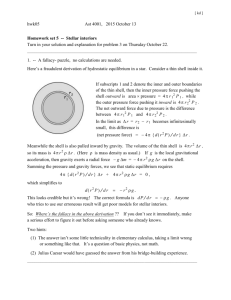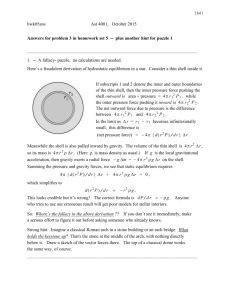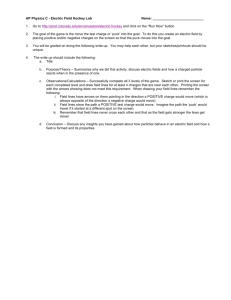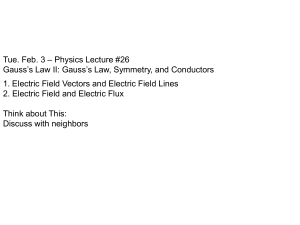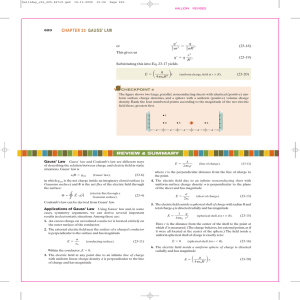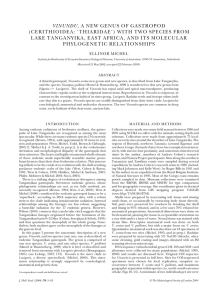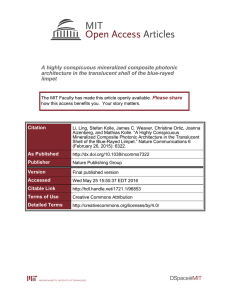Physics 3221 Spring Term 2007 Final exam, May 2, 2007
advertisement
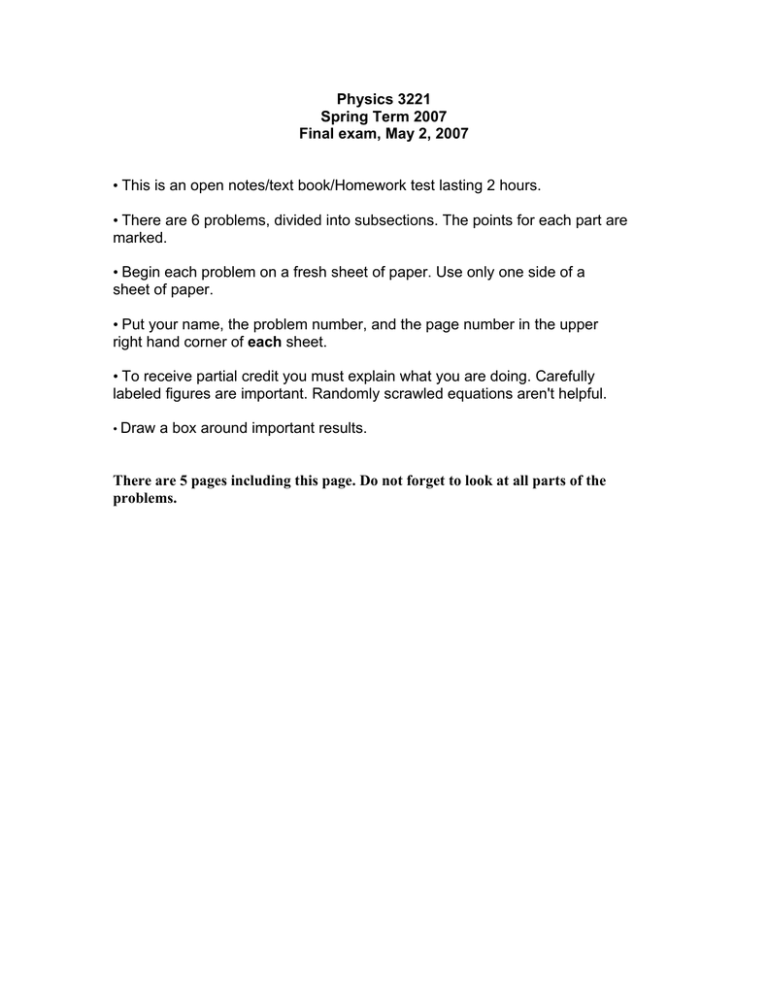
Physics 3221 Spring Term 2007 Final exam, May 2, 2007 • This is an open notes/text book/Homework test lasting 2 hours. • There are 6 problems, divided into subsections. The points for each part are marked. • Begin each problem on a fresh sheet of paper. Use only one side of a sheet of paper. • Put your name, the problem number, and the page number in the upper right hand corner of each sheet. • To receive partial credit you must explain what you are doing. Carefully labeled figures are important. Randomly scrawled equations aren't helpful. • Draw a box around important results. There are 5 pages including this page. Do not forget to look at all parts of the problems. Problem 1 (3 points) (multiple choice problem) P and R mark the highest and Q the lowest positions of a 50.0-kg boy swinging as illustrated in the following figure. What is the tension of the rope at point Q? (g = 10 ms-2) A. B. C. D. E. 250 N 525 N 700 N 1100N None of the above Problem 2 (2 points) (multiple choice problem) The diagram below depicts two pucks on a frictionless table. Puck B is four times as massive as puck A. Starting from rest, the pucks are pushed across the table by two equal forces. Which puck has the greater kinetic energy upon reaching the finish line? A. Puck A B. Puck B C. The both have the same amount of kinetic energy D. Too little information to answer. Problem 3 One spherical shell and two solid spheres were originally located infinitely far away from one another. The spherical shell has inner radius a/2, outer radius a and mass M. The solid spheres each has radius a and mass 2M. These 3 objects were brought together so that they touch each other as shown in the figure. (a) (3 points) Find the change in gravitational energy when these 3 objects were brought together. (b) (4 points) The top sphere is now removed. A small mass m is located within the remaining spherical shell, at the inner surface at point C that is on a line joining the centers of the sphere and the shell. It has initial velocity u traveling towards the center of the shell. Both the sphere and the shell are fixed in position. Find the minimum u for m to reach the center of the shell. 2M Part (a) M 2M Part (b) M 2M C Problem 4 A thin sheet with infinite area is located on the x-y plane. The mass per unit area is ρ. (a) (2 points) Use Gauss law to find the gravitational field (both magnitude and direction) at locations z>0 and z<0. (b) (2 points) Find the difference in gravitational potential between point A (z = a, x = y = 0) and point B (x = 0, y = -a, z = a). (b) (2 points) Find the difference in gravitational potential between point A above the plane (z = a, x = y = 0) and point C below the plane (z = -a, x = y = 0). a z A B a y x a C Problem 5 A mass m is attached to spring with spring constant k. Let x represent the displacement of the mass from equilibrium position. The mass is in a viscous medium with retarding force of magnitude mk x& . The mass is initially at rest for time t < 0. At t=0, an impulse P is applied to the mass in the positive direction. Ignore gravity. ( ) (a) (1 point) Write down the equation of motion for the mass. (b) (2 points) Find the general solution for the equation in part (a), in terms of t, k, m and arbitrarily constants. (c) (3 points) Find the displacement x (t) for t>0 in terms of P, m and k. Problem 6 A mass m is suspended between rigid supports by two identical springs. Each spring has zero mass, spring constant k and unstretched length ao. As shown in Fig. (i), they each have length a at the equilibrium position. The mass m is then displaced in the y direction (Fig. (ii)). Assume that m can only move in the y direction. Ignore gravity. (a) (2 point) Find the magnitude of the tension in each spring in Fig. (ii) in terms of k, y, a and ao. (b) (1 points) Find the y component of force exerted on the mass m. Assume a>>ao. (c) (3 points) Find the period of small oscillations for m. Fig. (i) a a Fig. (ii) y a a
